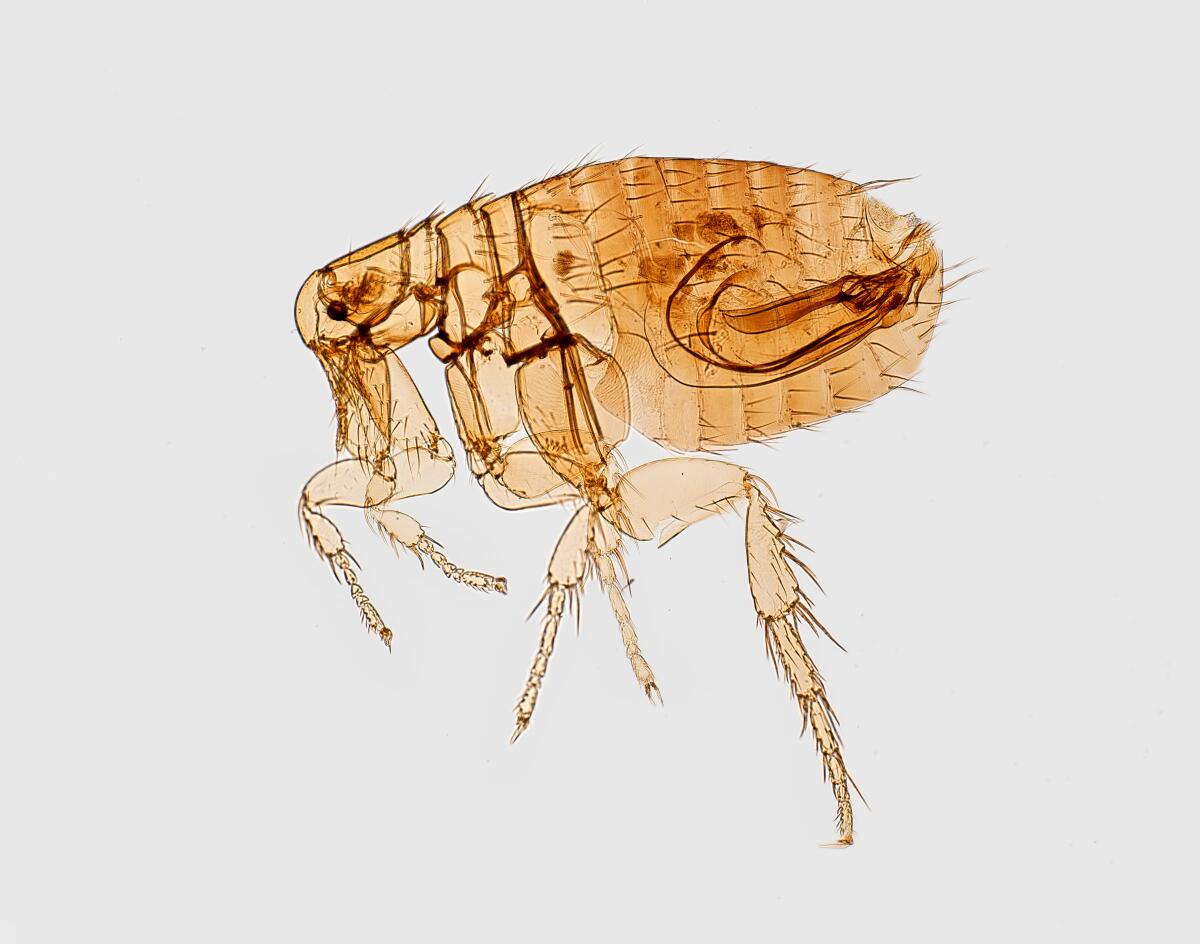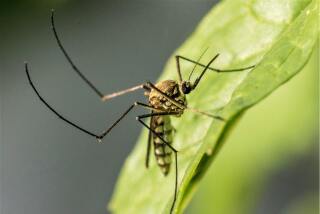Flea-borne typhus led to reported deaths in L.A. County for first time in decades

Flea-borne typhus was tied to three deaths in Los Angeles County last year amid a rise in reported cases of the illness, according to a report released Thursday.
The deaths marked the first time in almost three decades that anyone was reported to have died of illness associated with flea-borne typhus in L.A. County, public health researchers found. The report tallied 171 cases of flea-borne typhus reported in L.A. County in 2022 — a significant increase from the 31 cases reported in 2010.
The illness still remains far below the levels once seen around the U.S. in the 1940s, before “it came down with our efforts to control rodents and with the use of DEET,” said Dr. Jemma Alarcón, an epidemic intelligence service officer with the Centers for Disease Control and Prevention assigned to the L.A. County Department of Public Health. But in L.A. County, ongoing tracking shows that the illness “has been steadily increasing since 2010.”
The findings from Alarcón and others at the L.A. County Department of Public Health, working in collaboration with the Centers for Disease Control and the California Department of Public Health, were published Thursday by the CDC in its Morbidity and Mortality Weekly Report.
The illness is caused by bacteria and spreads to humans through infected fleas. It can cause fever, headache, and rashes that spare the palms and soles of the feet, among other symptoms. There is no vaccine to prevent it. Roughly a third of infected patients need intensive care for conditions such as seizures and septic shock, according to the report. The vast majority of people treated with the antibiotic doxycycline survive the illness, but in rare cases it can be fatal.
The three people who died in L.A. County — a 68-year-old man, a 49-year-old woman, and a 71-year-old man — had other conditions that may have put them at higher risk of severe illness. Two were diabetic and had obesity, hypertension and other ailments; one had a history of alcohol use disorder and meth use, the report found.
Researchers believed one might have been exposed to fleas through stray kittens in her backyard. Another lived close to “a highway and litter,” possibly exposing him to rodents and fleas, according to the report. The third, who was unhoused, might have been exposed at his encampment, researchers wrote.
As the planet gets hotter, animals and the pathogens they carry are relocating, and diseases are cropping up in places they’ve never been found before.
Several factors could be driving the rising numbers: Flea-borne typhus might be on the rise in suburban areas due to the prevalence of the cat flea, which affects both pets and free-roaming animals, or because of an increase in rodent populations in urban and suburban areas in L.A. County, the report suggested.
Public health officials urged doctors to keep flea-borne typhus in mind whenever they encounter a patient with fever, headache and rash, especially if they live in or have traveled to somewhere where the disease is endemic, like L.A. County. If flea-borne typhus is suspected, treatment with doxycycline should be initiated promptly.
Alarcón said that “if you have had exposure to fleas, rodents, opossums or free-roaming cats, you should mention that to your physician.”
Pet owners should also use veterinarian-approved flea control products on their animals to reduce their risk of flea exposures, the report recommended.
And “good urban rodent control can be the best way to prevent the disease,” said Dr. Dawn Terashita, associate director of acute communicable disease control at L.A. County Public Health, another one of the authors of the report.
More to Read
Sign up for Essential California
The most important California stories and recommendations in your inbox every morning.
You may occasionally receive promotional content from the Los Angeles Times.












